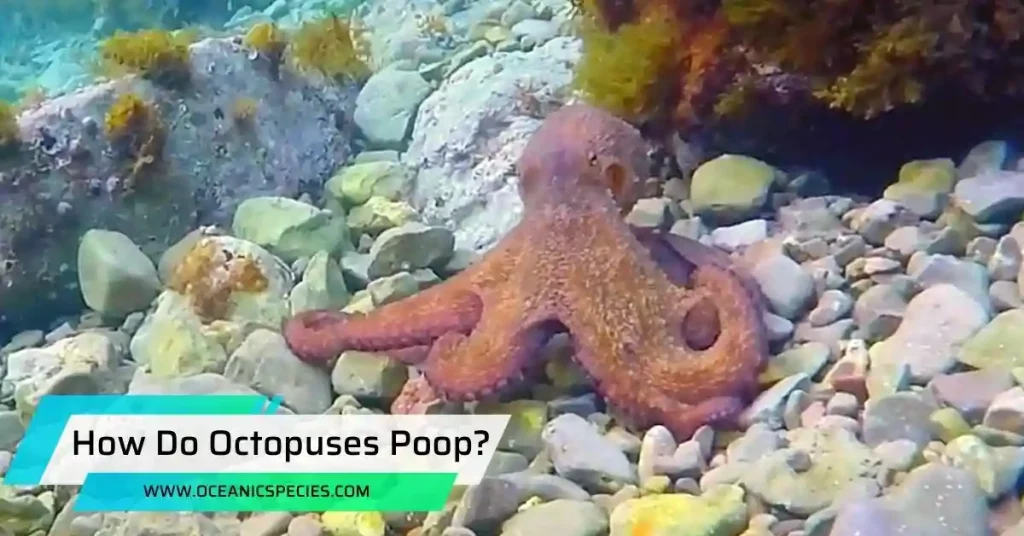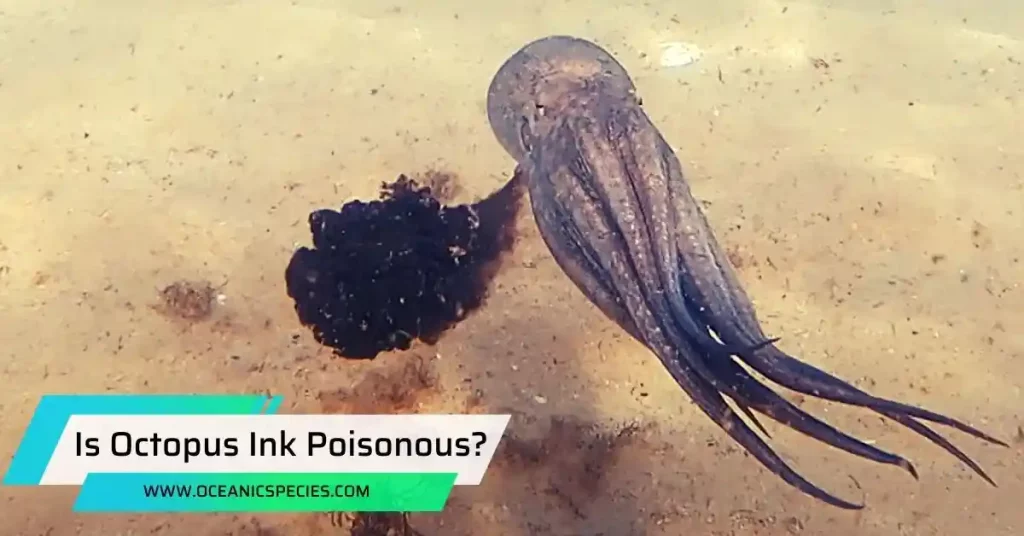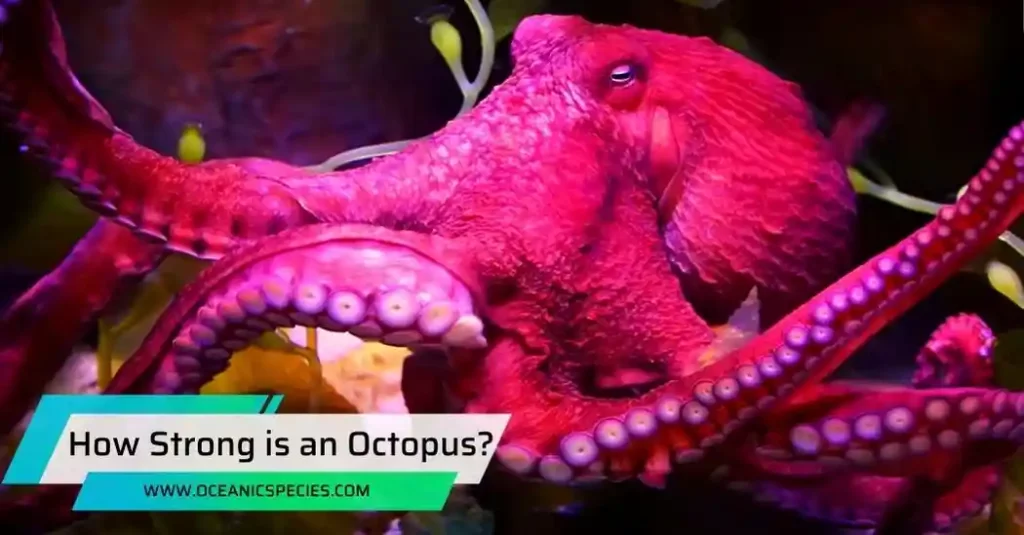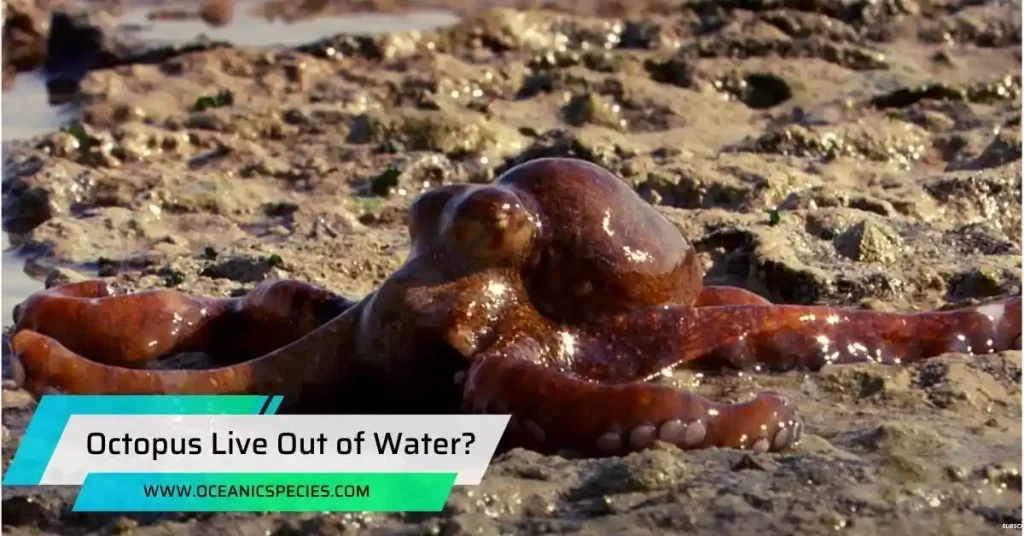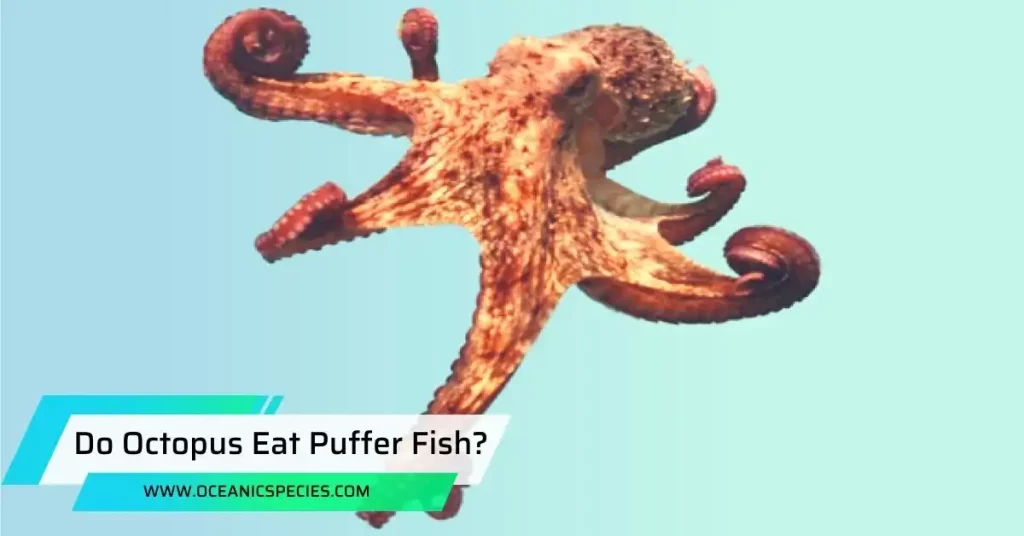Octopuses poop by expelling waste through their siphon.
The Anatomy Of Octopus Waste
Octopuses eliminate waste through their anus in the form of thin, long strings of white poop that do not have a strong odor. Octopus waste is expelled from their bodies, providing insight into the fascinating anatomy of how these creatures eliminate waste.
Overview Of The Digestive System:

Octopuses have a unique digestive system that allows them to consume and process their food efficiently. The digestive system of an octopus is made up of various components, including the esophagus, stomach, digestive gland, and intestines.
This system enables octopuses to break down food into nutrients that can be absorbed and used for energy.
The Role Of The Digestive Gland:
One crucial component of an octopus’s digestive system is the digestive gland, also known as the hepatopancreas. The digestive gland serves multiple functions, including the secretion of digestive enzymes that aid in the breakdown of food.
These enzymes help to break down proteins, fats, and carbohydrates, allowing the octopus to extract essential nutrients.
The Journey Of Food Through The Digestive System:
When an octopus consumes food, it enters the esophagus, a muscular tube that connects the mouth to the stomach. From the esophagus, the food moves into the stomach, where further digestion takes place.
After being processed in the stomach, the partially digested food moves into the digestive gland, where the majority of the digestion occurs. The digestive gland secretes enzymes that further break down the food into smaller molecules that can be absorbed.
How Waste Is Formed In The Intestines:
Once the food has been broken down and the nutrients extracted in the digestive gland, waste products are formed. These waste products, also known as feces or octopus poop, contain indigestible materials, such as undigested food particles and insoluble fibers.
The waste then moves into the intestines, where water is absorbed, and the feces are consolidated. Eventually, the waste is expelled from the octopus’s body through the anus, completing the process of defecation.
The Process Of Octopus Defecation

Octopuses expel their waste through their bodies in the form of long strings of white poop, which do not have a strong odor. They eliminate the waste through their anterior urinary papillae, situated on the renal sacs.
How Octopuses Expel Waste From Their Bodies:
Octopuses have a fascinating process for expelling waste from their bodies. Here’s an overview of how it all happens:
The Role of the Rectal Gland in Preparing Waste for Expulsion:
- The rectal gland plays a crucial role in the process of octopus defecation.
- It helps in removing excess salt from the body, ensuring proper osmotic balance.
- The rectal gland secretes a concentrated salt solution that is mixed with the waste before expulsion.
The Mechanics of Defecation in Octopuses:
- Octopuses have a single, posterior opening called the anus, through which both waste and water are expelled simultaneously.
- The waste material, along with the concentrated salt solution from the rectal gland, is pushed out through the anus.
- Muscular contractions in the mantle cavity of the octopus facilitate the expulsion of waste and water.
Defecation is not just about getting rid of waste for the octopus. It serves another important purpose:
- The expulsion of waste helps the octopus maintain its buoyancy in the water.
- By releasing waste and water, the octopus can control its buoyancy, allowing it to swim or hover at different depths.
Characteristics Of Octopus Waste

Let’s dive into the characteristics of octopus waste and explore some interesting facts:
The color, texture, and consistency of octopus waste:
Octopus waste varies in color depending on their diet, ranging from brown to black. The texture of octopus waste can be slimy or gelatinous, thanks to their mucus-rich digestive system. Consistency-wise, octopus waste can be either solid or semi-solid, with some parts resembling tentacles or beak fragments.
Comparisons To Waste Produced By Other Marine Animals
Octopus waste differs from waste produced by other marine animals, and here’s how:
Fish waste:

Fish waste is often in the form of pellets or flakes, whereas octopus waste is more variable in shape and consistency. Unlike fish waste, octopus waste contains mucus secretions which help in lubricating the waste as it passes through their complex digestive system.
Shark waste:

Shark waste is typically cylindrical and composed of undigested remains, such as bones and cartilage. Unlike sharks, octopuses have a beak (similar to a bird’s beak), which is made of chitin and is often visible in their waste.
Do Different Octopus Species Produce Different Types Of Waste?
Octopuses come in various species, and it’s interesting to note whether their waste differs. Here’s what we know:
- Different octopus species do produce different types of waste.
- The color, texture, and consistency of octopus waste may vary between species, depending on their diet and digestive system.
Does The Diet Of The Octopus Affect The Characteristics Of Its Waste?
As with any living creature, an octopus’s diet definitely influences the characteristics of its waste.
Octopuses are known to have a diverse diet, including fish, crustaceans, and mollusks. The diet of an octopus affects the color, texture, and consistency of its waste. For example:
- If an octopus primarily consumes fish, its waste might have a darker color due to the pigment found in fish.
- Octopuses that feed on mollusks may produce waste with a higher mucus content.
The Environmental Impact Of Octopus Waste
Octopuses excrete waste through long strings of white poop that do not smell. Their waste has a minimal environmental impact as it is thin and decomposes quickly.
The Role Of Waste In Nutrient Cycling And Ecosystem Health:
Waste plays a crucial role in nutrient cycling and maintaining ecosystem health. When organisms excrete waste, it introduces essential nutrients back into the environment. These nutrients can be utilized by other organisms, promoting a balanced ecosystem.
Octopus waste contributes to nutrient cycling in marine environments, ensuring the availability of nutrients for other organisms. This cycle helps sustain the overall health and biodiversity of marine ecosystems.
How Octopus Waste Contributes To The Marine Food Chain:
Octopus waste consists of undigested food particles and other organic matter. This waste serves as a valuable food source for various organisms in the marine food chain. Detritus feeders, such as worms and small crustaceans, consume octopus waste.
These detritus feeders, in turn, are preyed upon by larger predators, creating a chain of energy transfer. Octopus waste indirectly supports the survival and growth of other marine organisms in the food chain.
Negative Effects Of Octopus Waste On The Environment:
While octopus waste can have positive effects, it can also have negative impacts on the environment. Excessive amounts of waste can lead to nutrient imbalance and water pollution.
In areas with high concentrations of octopus waste, oxygen levels may decrease, causing harm to other aquatic organisms. Additionally, the decomposition of large amounts of waste can deplete oxygen, creating hypoxic conditions.
These negative effects highlight the importance of maintaining a balance in waste production and decomposition.
Is Octopus Waste Beneficial For Any Other Organisms?:
Octopus waste can be beneficial for certain organisms in the marine ecosystem. Detritus feeders, mentioned earlier, rely on waste as a food source for their survival. Bacteria and microorganisms also play a vital role in breaking down waste materials, contributing to the decomposition process.
Some organisms may even utilize waste as a habitat or nesting material. Overall, while octopus waste may have negative implications in certain situations, it can also provide benefits for specific organisms in the marine environment.
Frequently Asked Questions
What Color Is Octopus Poop?
Octopus poop is white and appears as thin, long strings. It does not have a strong odor. Octopuses have a unique process for eliminating waste.
How Do Octopuses Poop And Pee?
Octopuses expel their waste through separate openings: feces through their siphon and urine through their renal papillae.
Conclusion
Octopuses are fascinating creatures, and their bodily functions, including how they poop, are equally intriguing. Octopuses expel waste in the form of long, thin strands of white poop. Unlike many other animals, octopus droppings do not emit any noticeable odor.
This unique characteristic is likely due to their diet, which consists mainly of crustaceans and other marine life. Understanding how octopuses poop provides insight into their overall biology and digestive systems. It highlights the efficiency of their bodies in extracting nutrients from their food and eliminating waste products.
Despite being mollusks, octopuses have intricate and complex digestive processes. Learning about how octopuses poop also leads to a broader appreciation for the diverse and intricate workings of marine life. It reminds us of the incredible diversity and adaptability of species that inhabit our oceans.

